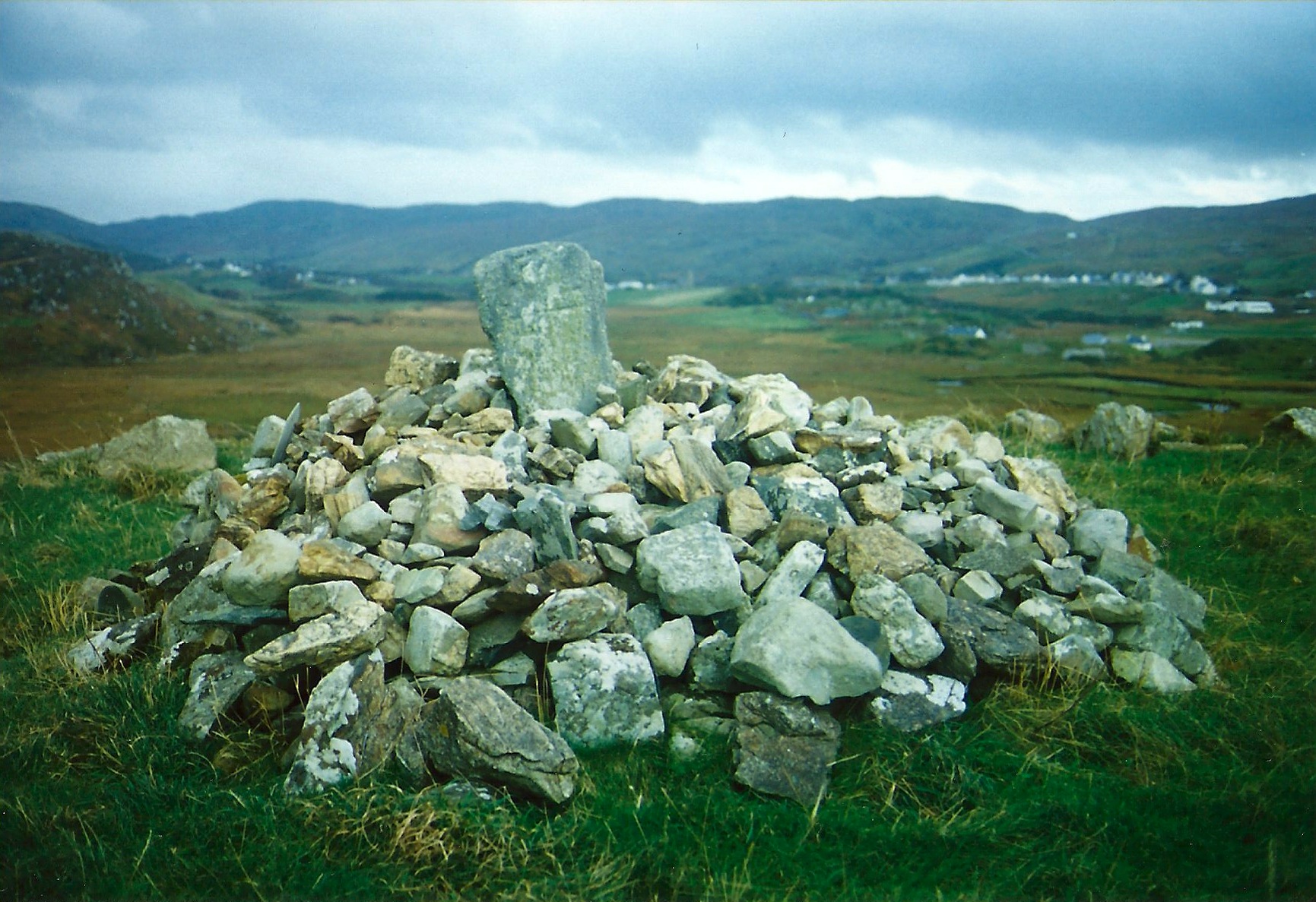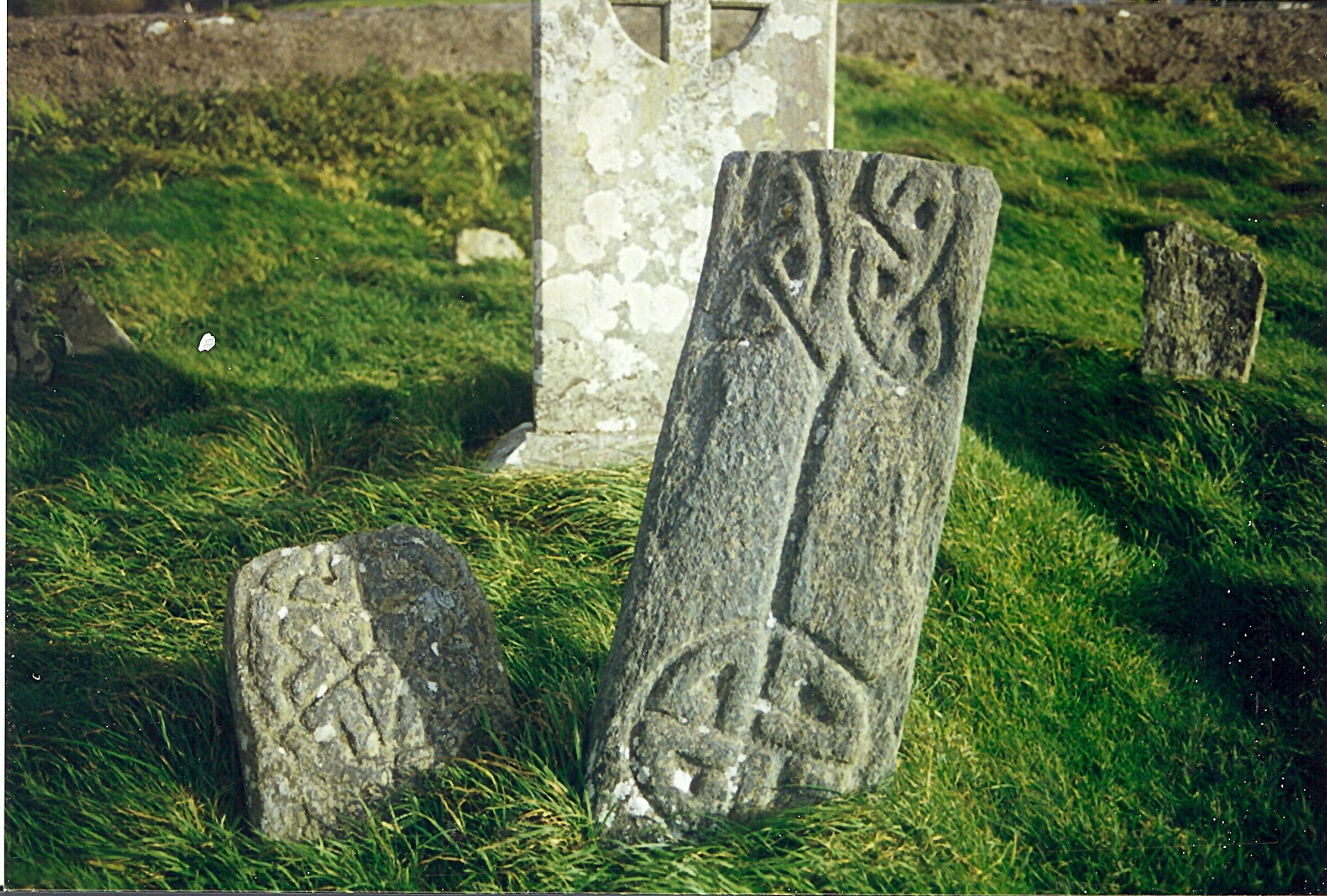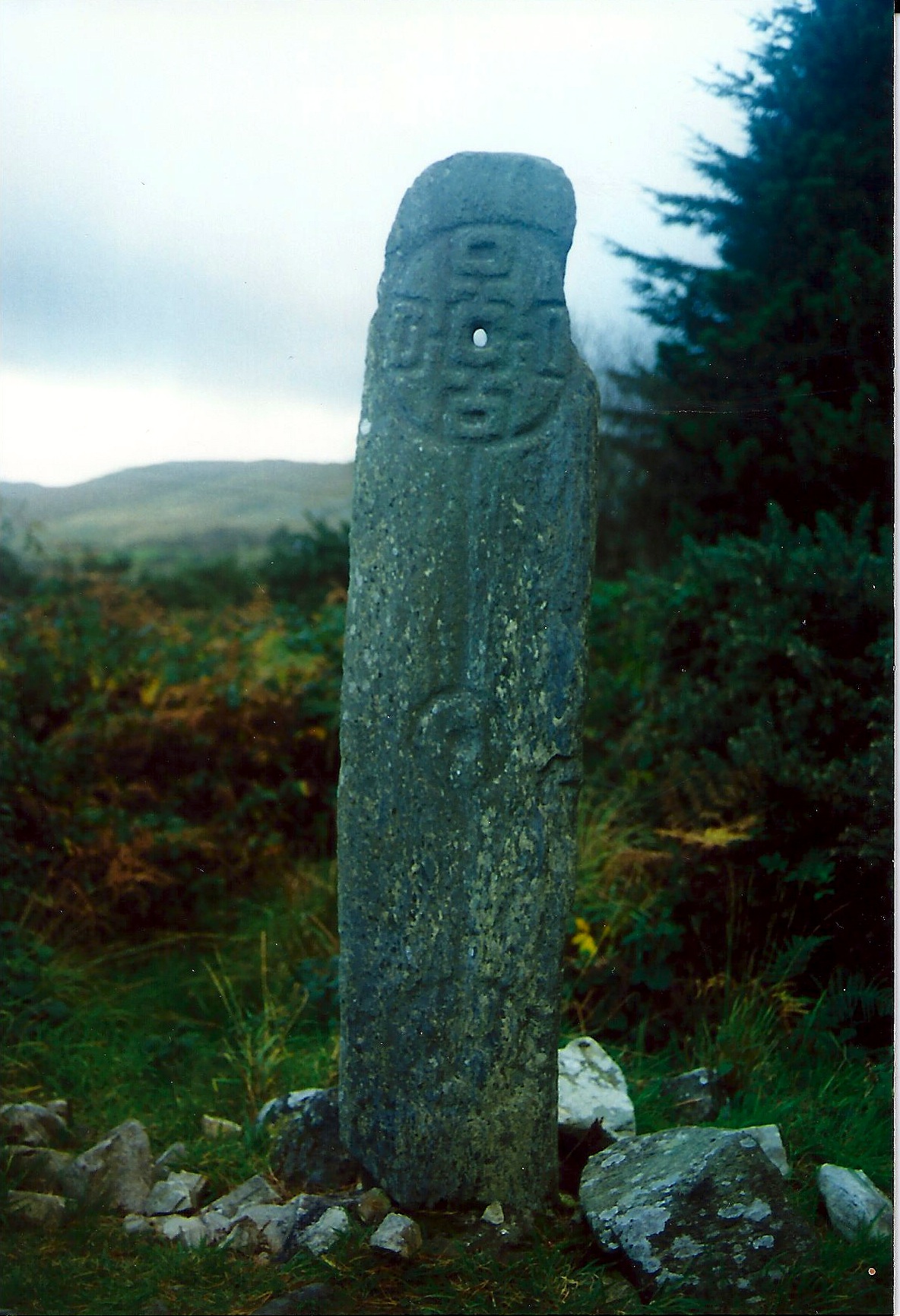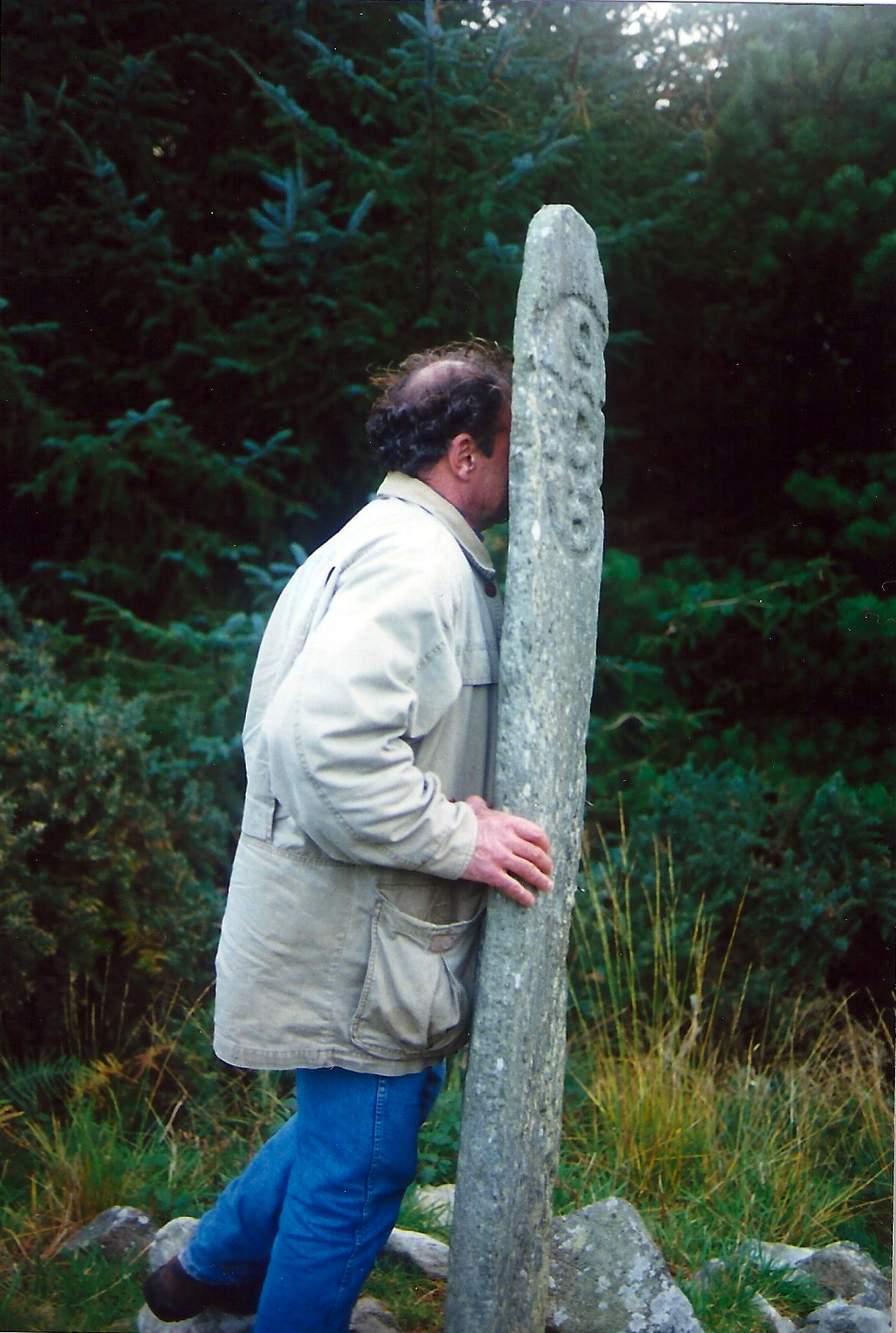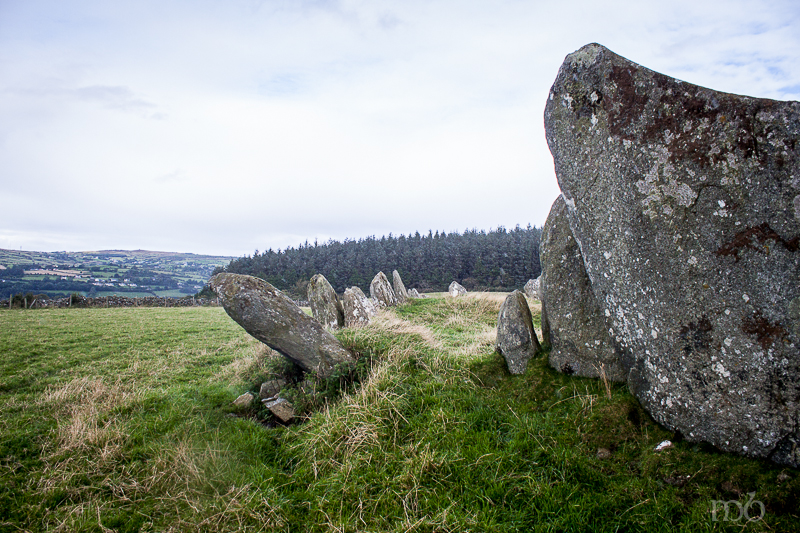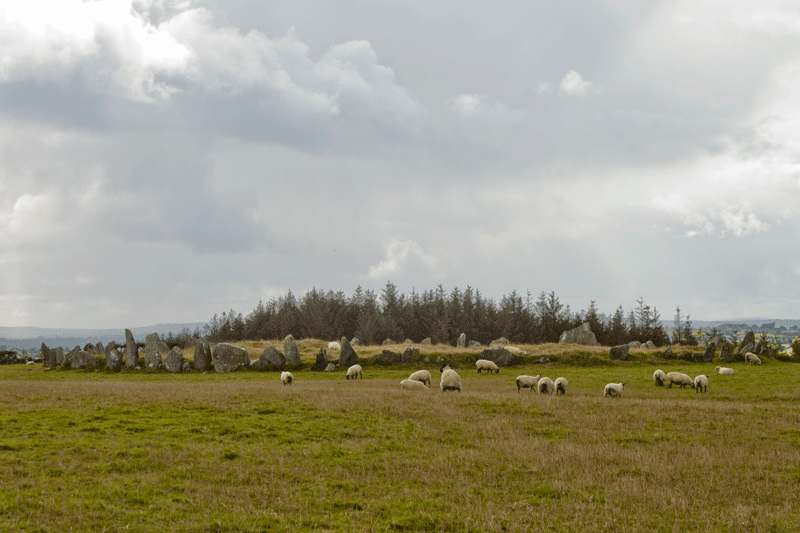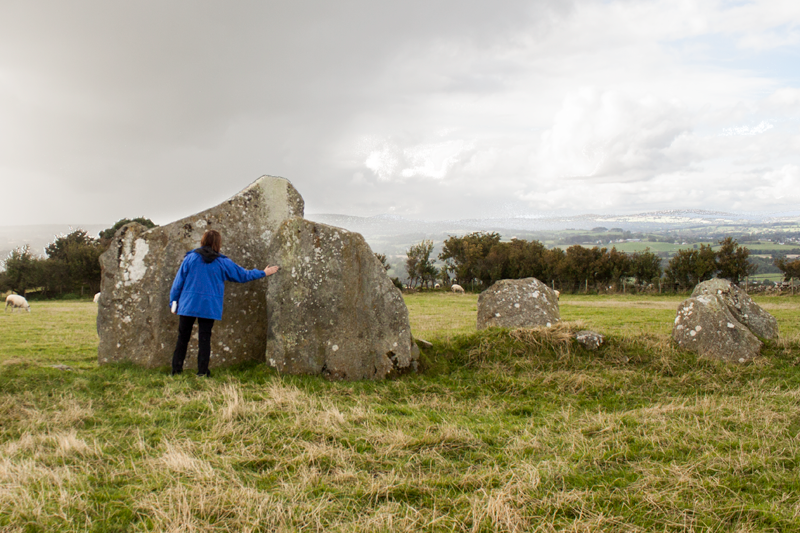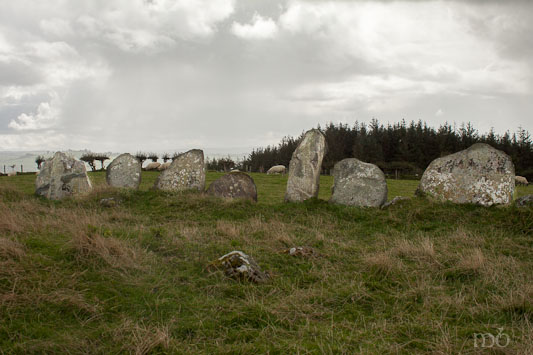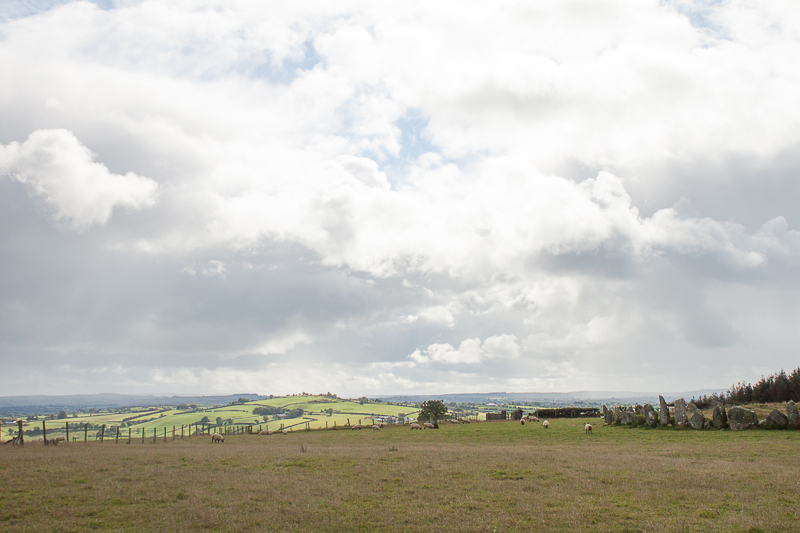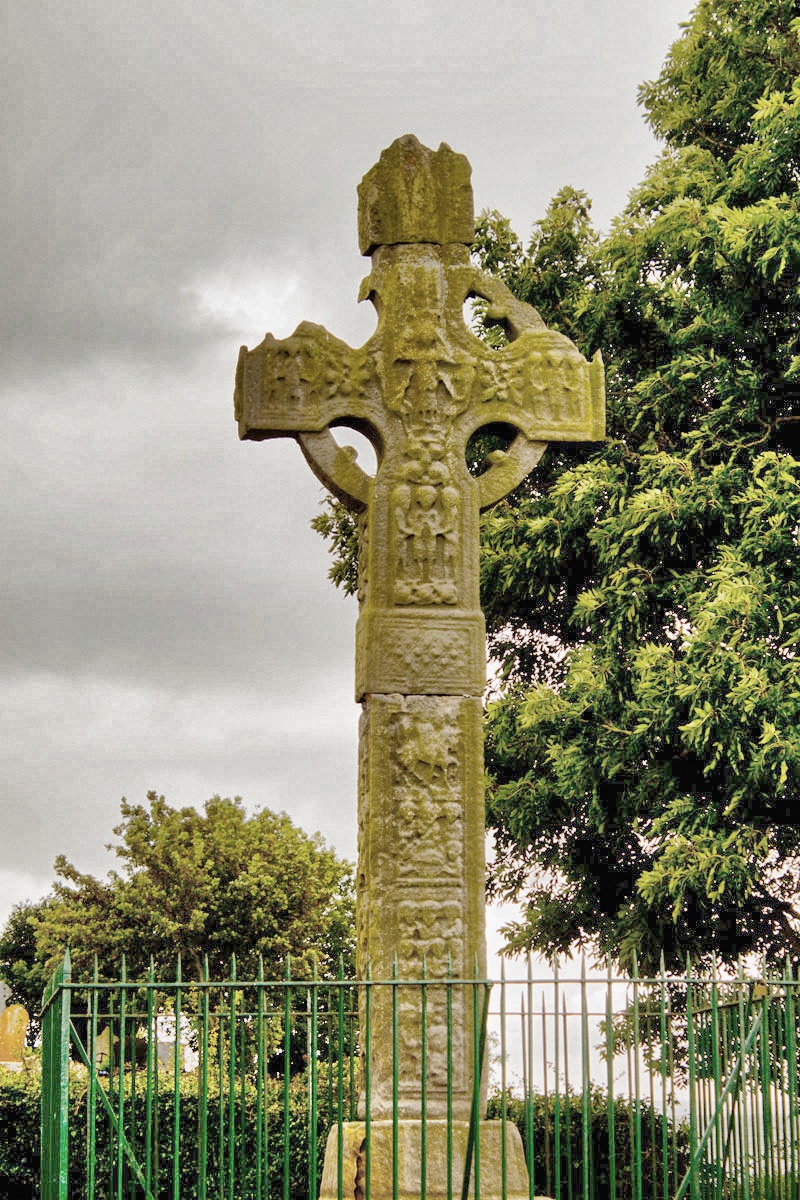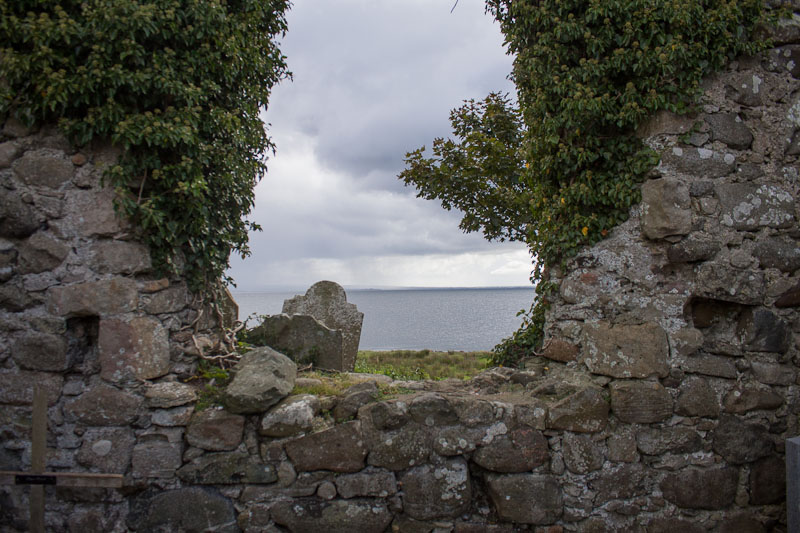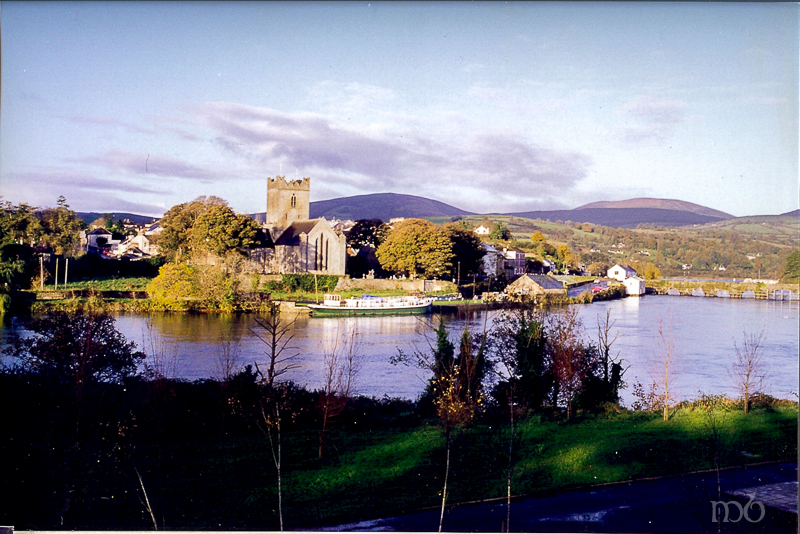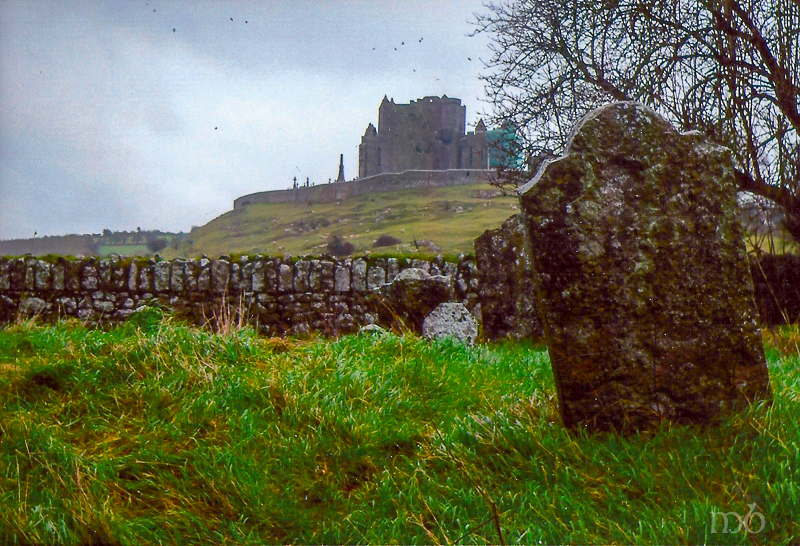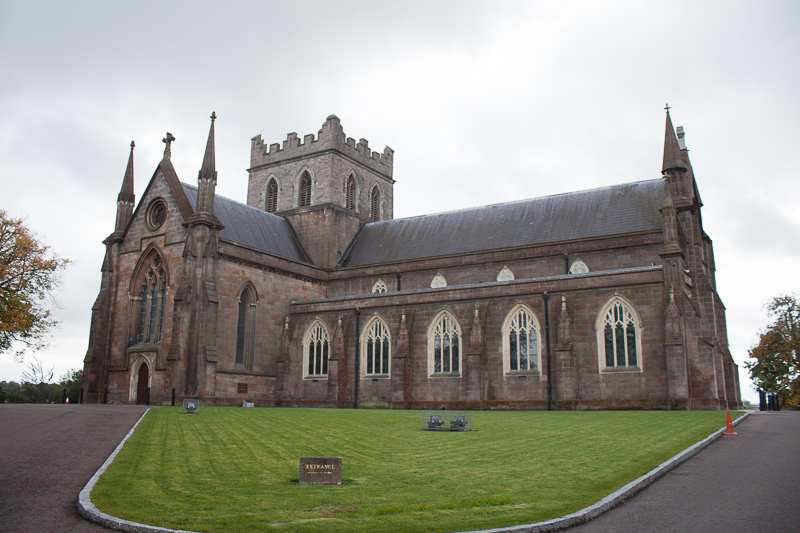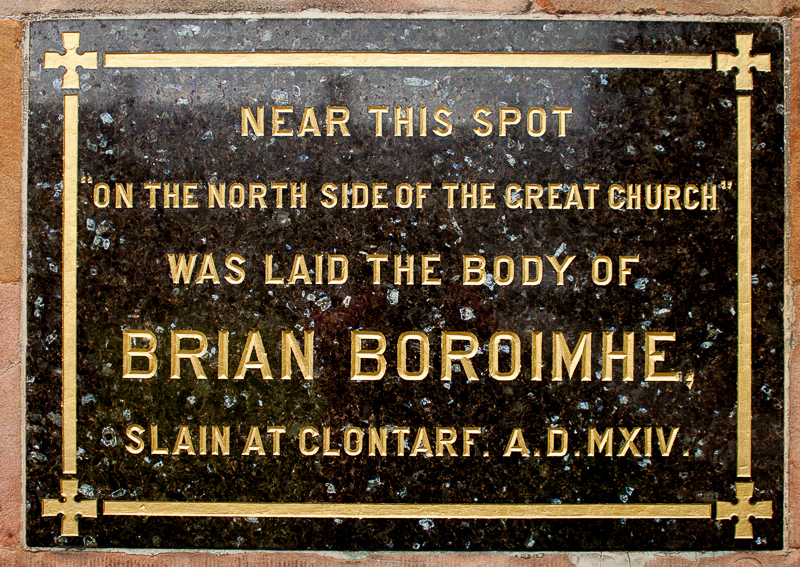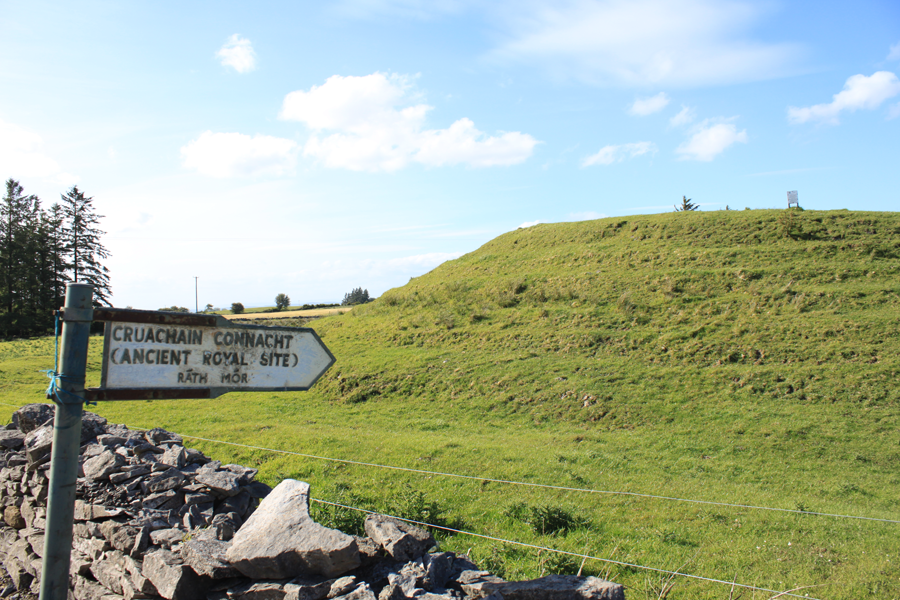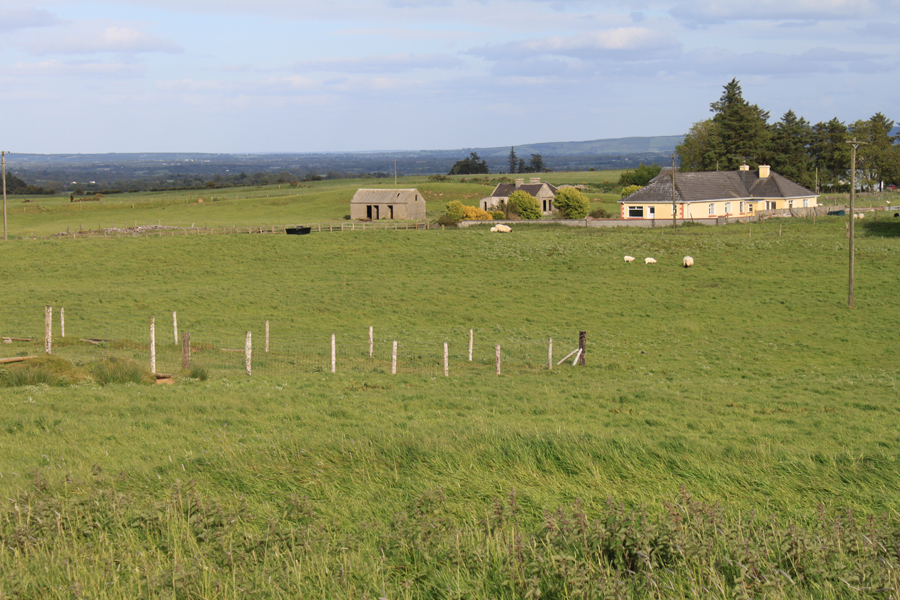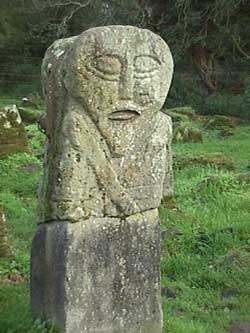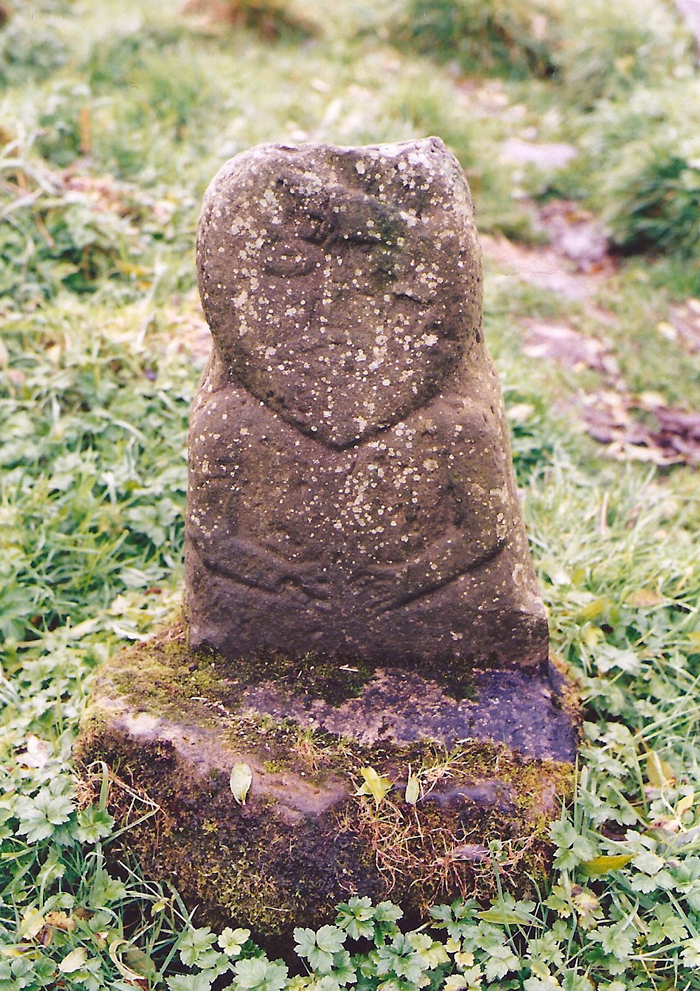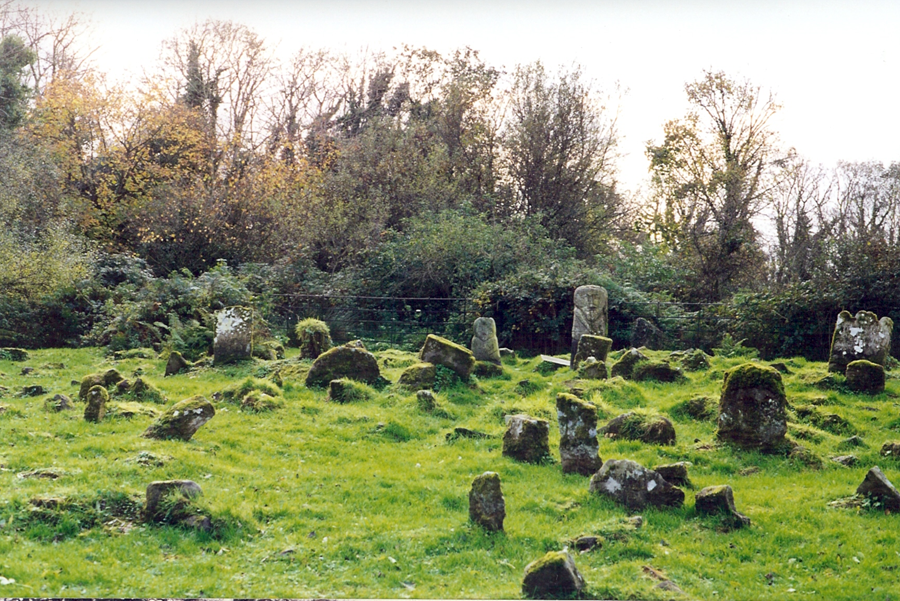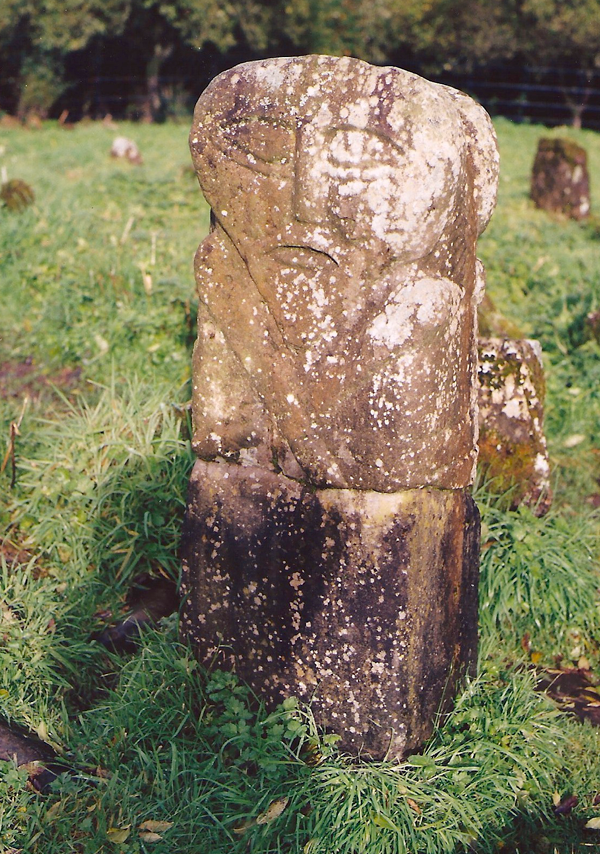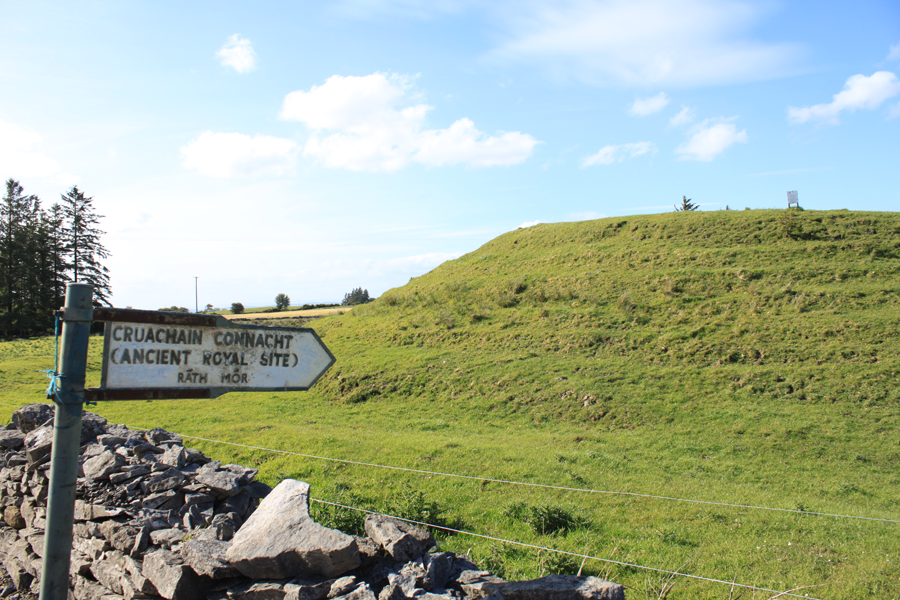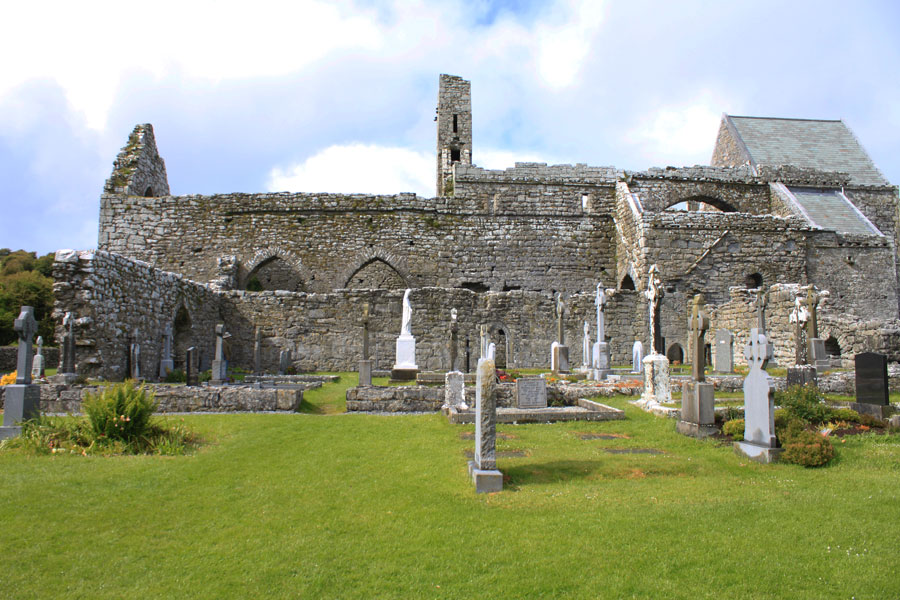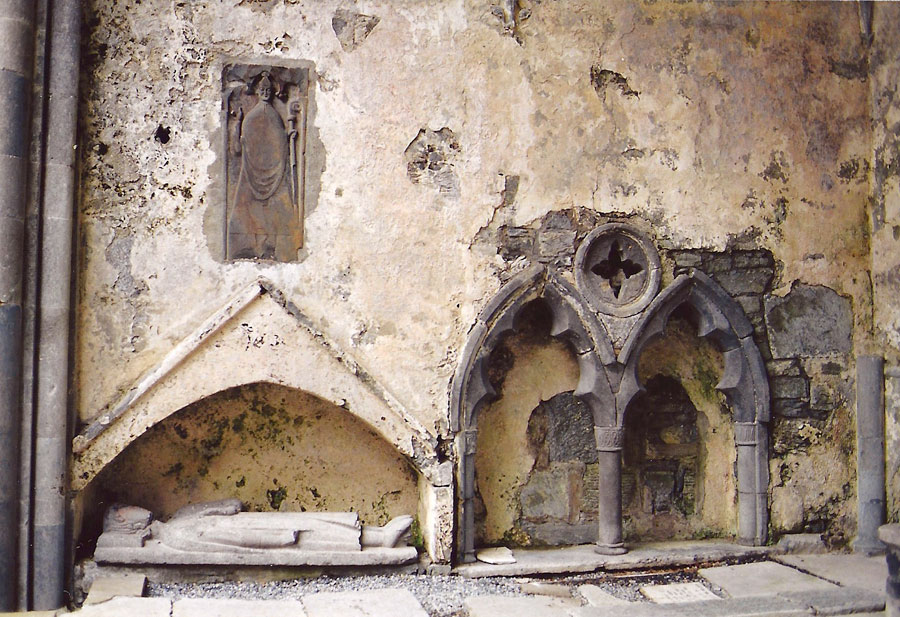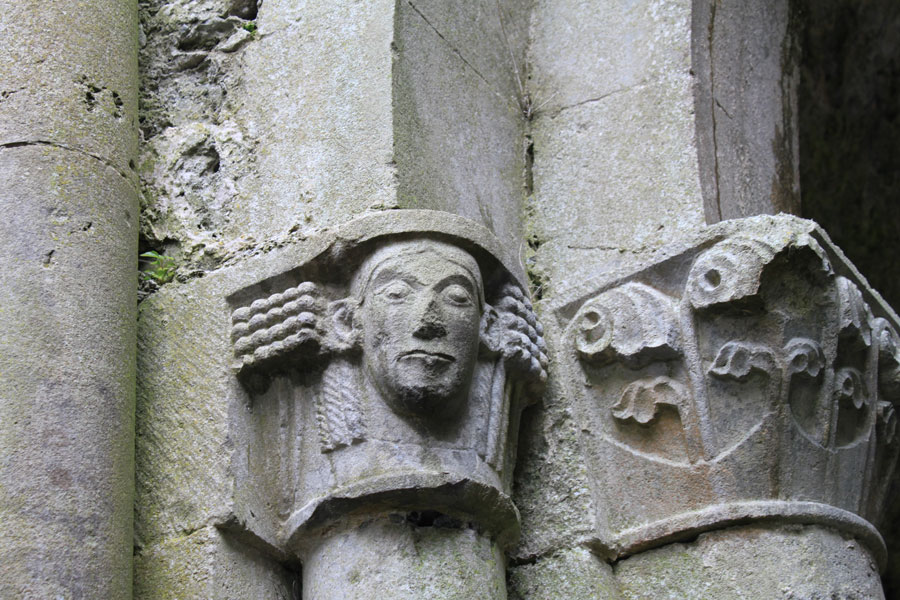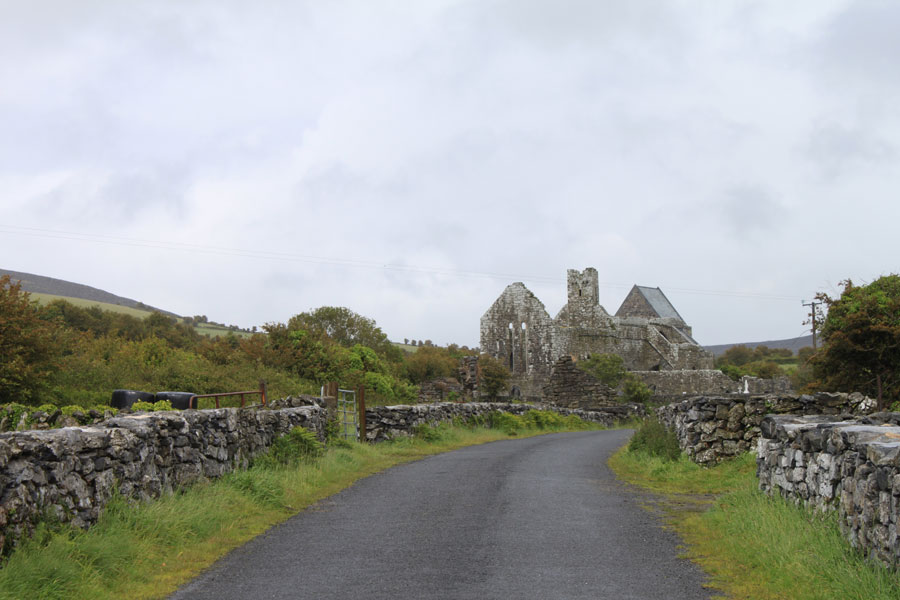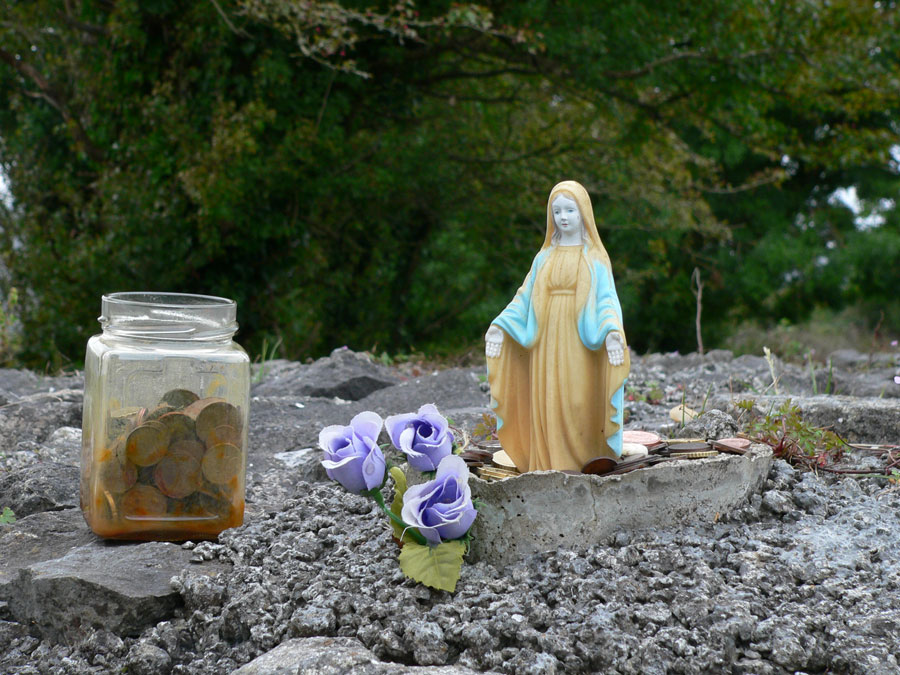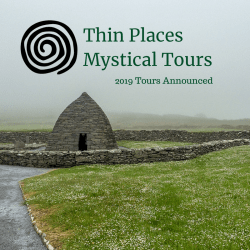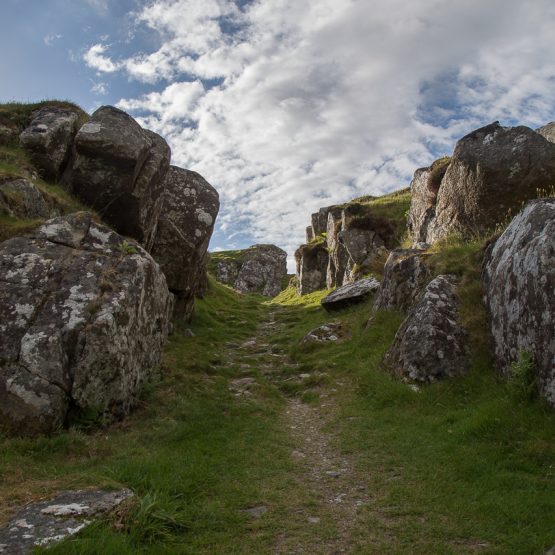Thin Places: Irish Gateways to the Otherworld
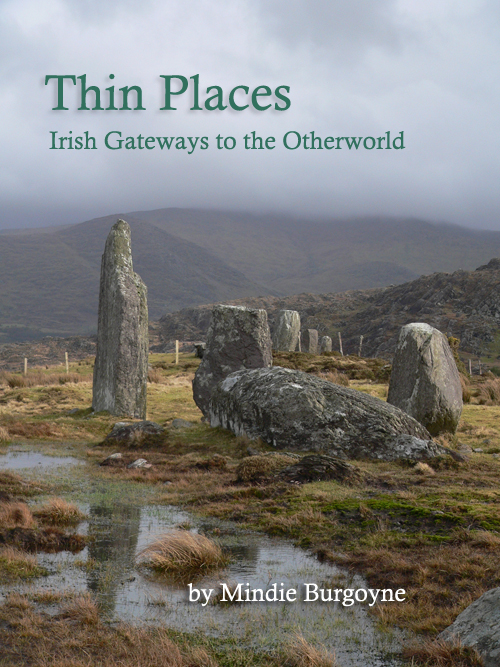 Thin Places: Irish Gateways to the Otherworld, by Mindie Burgoyne will published in 2015.
Thin Places: Irish Gateways to the Otherworld, by Mindie Burgoyne will published in 2015.
The book is approximately focuses on places where the veil between this world and the eternal world is thin. These could be places with a powerful spiritual energy – places that were marked sacred by people who lived centuries ago – places where people still go to feed the spirit and the mind.
The book includes commentary about 33 sites in Ireland – some familiar such as Glendalough, the Hill of Tara, Newgrange, Croagh Patrick, Glencolumkille, the Aran Islands and Carrowkeel, and some more obscure like Ardboe, St. Berrihert’s Kyle, Cashelkeelty Stone Circle, Ardmore and Doolough. Additionally, the book will highlight beliefs and practices regarding thin places such as earth energies, rituals and the connection between sites, geography and the Celtic year.
Mindie Burgoyne has been traveling to Ireland and researching thin places for 20 years. This book is an accumulation of the most mystical places she’s been. It allows the reader to go on a vicarious journey – walking in two worlds.
RESERVE YOUR COPY – NO PURCHASE UNTIL PRINTED
Those interested in obtaining a signed copy one of the first thousand books printed should email tours@travelhag.com with your request. Include your NAME and ADDRESS and email where you’d like to receive notification of publication date. You will be among the first to receive signed copies.
No personal contact information entered on the form will be shared. This is strictly for those interested in reserving one of the first copies of Thin Places.
St. Columba and Glencolumbkille
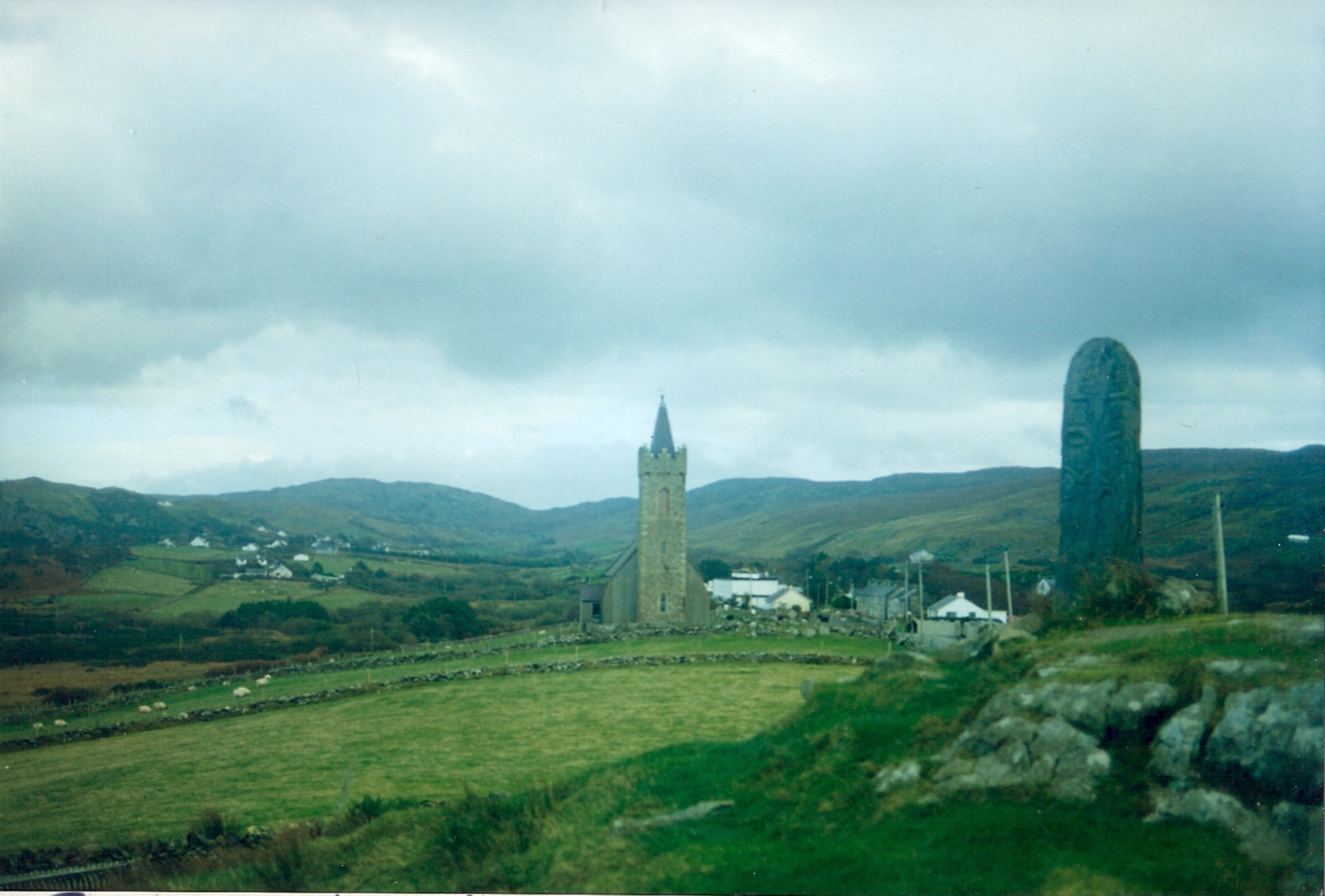 Glencolumkille is a rural parish in southwest County Donegal. It is most known for its pilgrimage that honors the patron saint and protector of Donegal, St. Columba. There are many variations of his name (Columbkille, Colmcille). The Pilgrimage of St. Colmcille, also known as the Turas Cholmcille honor the saint while personally drawing his blessing and strength by walking in his footsteps across a land that was once his home. There are 15 stations scattered throughout an enchanted glen – each marked by a pillar stone or cairn or some type of stone marking.
Glencolumkille is a rural parish in southwest County Donegal. It is most known for its pilgrimage that honors the patron saint and protector of Donegal, St. Columba. There are many variations of his name (Columbkille, Colmcille). The Pilgrimage of St. Colmcille, also known as the Turas Cholmcille honor the saint while personally drawing his blessing and strength by walking in his footsteps across a land that was once his home. There are 15 stations scattered throughout an enchanted glen – each marked by a pillar stone or cairn or some type of stone marking.
My favorite definition for “pilgrim” was written by Paul Elie, found in his book The Life You Save May Be Your Own, a book about great writers and the power they have over us. Paul says, “A pilgrim travels within the context of a story, in order to be changed by the story.” The definition certainly fits the pilgrims who do the Turas in Glencolumkille.
To remember the story of St. Columbkille is to remember a man who was a descendent of the ruling tribe – royalty in his day. A man who was educated and tutored by the best scholars. Columbkille was a leader who could shape meaning from circumstances. He founded more monasteries and monastic communities than any other single Irish saint. But pride got the best of him when he was at his most powerful, and he picked an fight with another saint – St. Finian who had an illustrated psalter. St. Columbkille secretly copied St. Finian’s book so that he would have a copy for himself.
St. Finian was offended and demanded Columbkille’s copy. Columbkille refused saying knowledge gained from books should be shared not coveted, especially when pertaining to God. Finian took the matter to the High King for arbitration and the High King ruled in favor of St. Finian with a famous statement – “To every cow its calf and to every book it’s copy” meaning every calf belongs to its mother and every copy of a book belongs to the original book’s owner. Columbkille was outraged in losing the battle and this disagreement eventually led to Columbkille’s tribe attacking a tribe to the south which led to the slaughter of over 3000 people.
Columbkille was so ashamed to have been the root of so much death and destruction in his native land, that he sent himself into voluntary exile. He sailed from his beloved Derry to Scotland landing with a few followers on the island of Iona where he established a community which flourished into a great seat of learning and spiritual growth. Iona still has a community there and it continues today to draw pilgrims.
So as the pilgrims travel through the station in Glencolumbkille, they reflect on the saint’s life, his strength, his weaknesses and his devotion, and they ask his blessing for own lives. Every station has a ritual, a prayer to be said, a devotion to be made. So that when the turas are all done, the pilgrim has drawn strength from both the story and energy of the land.
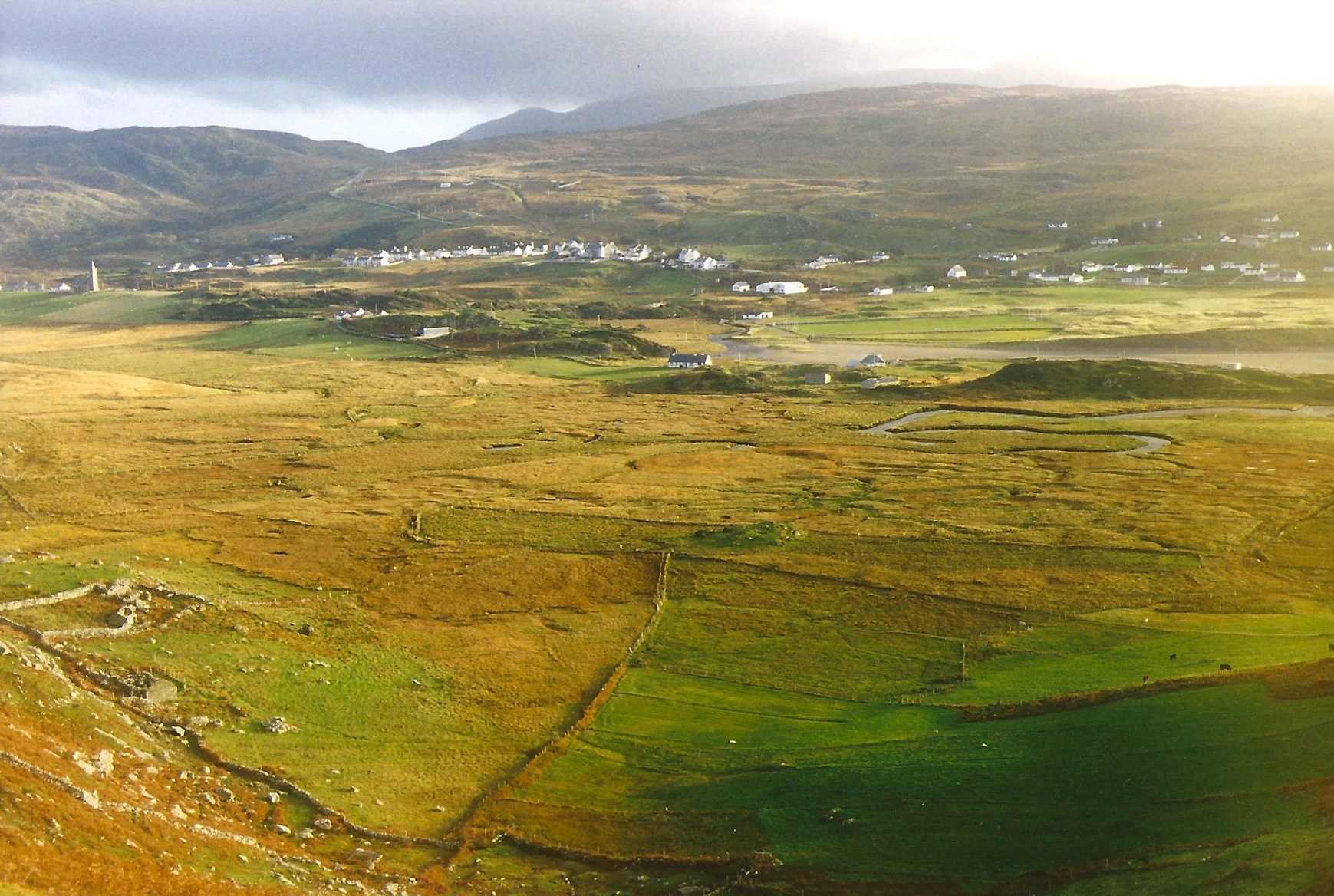 The land has been considered sacred for thousands of years. Devotion and ritual in the glen dates back thousands of years. Portal tombs dating from 2000 BC can be found in the glen as well as court tombs the date to 4000 BC. The land in Glencolumbkille has an energy that early civilizations felt … that has lasted until the present day.
The land has been considered sacred for thousands of years. Devotion and ritual in the glen dates back thousands of years. Portal tombs dating from 2000 BC can be found in the glen as well as court tombs the date to 4000 BC. The land in Glencolumbkille has an energy that early civilizations felt … that has lasted until the present day.
Though Ireland has suffered in recent years with abuses committed by Catholic clergy which has rocked the faith of many, there are still hundreds that come to the glen each year to do the rounds. This kind of joining of devotion, spirit, land and healing never betrays trust.
I visited Glencolumbkille shortly after I married my husband. Our favorite spot was the Stone of Gathering (Turas 9). This tall carved pillar has a hole in the top. The stone was tied to a tradition where engaged couples would intertwine their fingers in the hole while professing their love and commitment to each other before a gathering of community members. There is also a tradition that if you peer through the hole (as Dan is doing in the image above) you will get a glimpse of heaven. The view from where Dan is standing is breathtaking. There is a special energy around this pillar… a kind of loving, warm, peaceful energy.
At the southwestern tip of Glencolumbkille is Slieve League (Sliabh Liag) which is the highest cliff face in Western Europe. The monastic serenity that blankets the entire glen and its scenic surroundings moves from peaceful to powerful – back and forth – and the prayers of the pilgrim mirror that energy.
“…echoes of the centuries’ feet
That moved along the penitential stones
In all thy winds are sweet.
Here came my fathers in their life’s high day
In barefoot sorrow, but God knows the whole:
Not for themselves they fasted, but to lay
Up riches for my soul.”
Glencolumkille and Slieve League are stops on the 2013 Thin Places Mystical Tour of Ireland. Check out the itinerary.
Other Good Webpages on Glencolumbkille and the Turas
Voices from the Dawn – Glencolumbkille Turas
Megalithic Ireland – Glencolumbkille Turas
Your message has been sent
Beltany Stone Circle – Thin Place in Co. Donegal
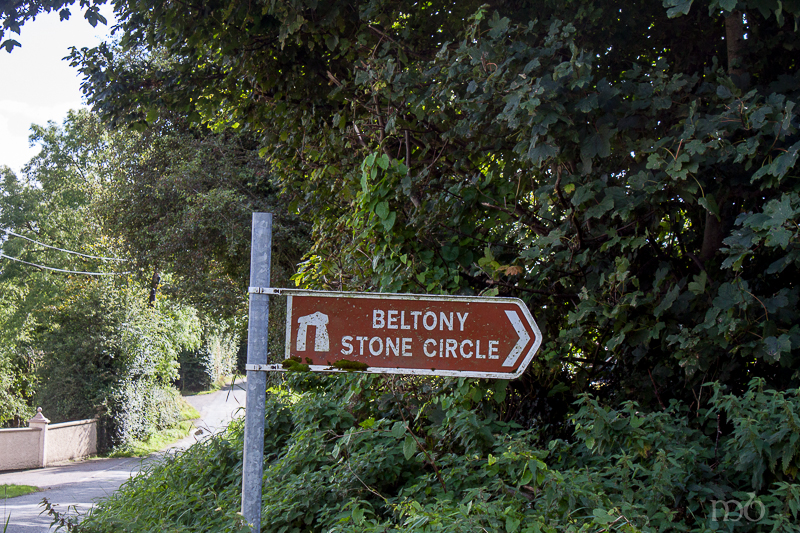 If a thin place is one where the veil between this world and the eternal world is “thin,” then Beltany Stone Circle in County Donegal ranks as one of the thinnest or most mystical sites in all of Ireland.
If a thin place is one where the veil between this world and the eternal world is “thin,” then Beltany Stone Circle in County Donegal ranks as one of the thinnest or most mystical sites in all of Ireland.
The circle dates back to 1400 – 800 BC, and is larger than most found in Ireland having 64 stones averaging 6 ft. in height. The circle measures about 145 feet in diameter. The site was excavated in the early twentieth century and significantly disrupted. Most believe that there were at least 80 stones in the original circle. These stones are orthostats – stones set against a rise or wall. They stand close together hemming in a raised earthen area resembling a kind of kerbing as seen in passage tombs. Some suspect that the circle and its center mounds could have comprised some kind of burial site that may have once been covered with earth. Others think the center “lumpiness” is a result of the disheveled condition the excavators left the site in back in the early 1900s.
The name Beltany is an Anglicization of the Irish word Bealtaine which is the feast of fire or rekindling the sun. Bealtaine festivals are celebrated on May 1st which is also the beginning of summer in the Celtic year. May 1st is the halfway point between the Spring equinox (the day when light and darkness are equal in hours) and the Summer Solstice (the longest day of daylight). The rituals on this day were linked to fire, particularly on hill tops across the landscape. Some believe this was a kind of refueling or re-firing the sun, or a form of worship that called down a blessing on the land and crops from the god of the sun.
The Beltany stone circle is located on Tops Hill. A wooded path (often muddy) leads from a car park to the summit. At the end of the shaded path, the landscape opens wide and in the distance, in a lone field one can see the jagged points of stones in a large stone circle. The transition from path to field feels much like a portal. There is a defined energy in this fields that grows stronger as one approaches the circle.
But there are two interesting stones in the circle that suggest it was used for measuring the seasons using astrological alignments, and possibly used for rituals related to the sun or sun god. These would be the tallest stone in the circle and the widest – the triangular stone with cup markings.
Most of the stones are tall and cylindrical in shape listing to one side or the other of the circle line. They resemble jagged old teeth. But the wide triangular stone, stands out. It’s special and immediately draws the eye. Additionally, it has cup markings on the inner face carved into it long ago. It faces ENE and stands directly across the circle from the tallest stone (about six feet high) which points WSW. When the two stones align they point to the summit of a hill about five miles away in Tullyrap – a summit where the sun rises directly over on May 1st – the feast of Bealtaine.
There are also noticeable outliers which may also have had a significance. According to Cary Meehan in her book A Travelers Guide to Sacred Ireland, “a line from the tallest stone in the south western part of the circle taken through the outlier, goes 28 miles south east to Bessy Bell Hill in Tyrone. Another line could run through the circle to Croaghan Hill, 4 miles ESE. ”
So Beltany Stone Circle could have been a passage tomb(s) or a tool for charting the agricultural seasons. It may have been aligned with other sacred sites. We know it was used for celebrations specifically linked to Bealtaine. Three carved stone heads dating to the Iron Age were found at Beltany during the excavation. They indicate that the circle was used for many centuries.
Today, though it’s been disrupted and disheveled, it still sits in place – marking the spot so many believed to be sacred. There site is still charged with energy. Even in the pouring rain, it offers a sense of thinness, of being in two worlds at one time.
Beltany Stone Circle is on the Images in the Landscape Tour in 2018.
Books to Read Before Travel to Ireland
Before traveling to Ireland it’s good to have some background on the country, its landscape, its heritage and its people. For our tours which focus on “thin places” or mystical sites, its also good to have an understanding of the legends, the lore and the rituals that compelled people to build cairns, stone circles, and mark sacred places.
Here are some books that helped me learn about mystical Ireland.
FICTION
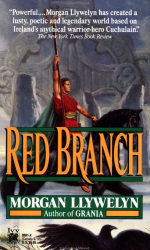 Red Branch by Morgan Llywellyn – this is the best book I’ve read that describes the Irish trilogy. It’s the story of Cuchulain, the Hound of Ulster and the Knights of the Red Branch that were based in Emain Macha – now Armagh, specifically the Navan Fort both of which are sites on our tour. It’s an entertaining saga and one that taught me a lot about Irish history and lore.
Red Branch by Morgan Llywellyn – this is the best book I’ve read that describes the Irish trilogy. It’s the story of Cuchulain, the Hound of Ulster and the Knights of the Red Branch that were based in Emain Macha – now Armagh, specifically the Navan Fort both of which are sites on our tour. It’s an entertaining saga and one that taught me a lot about Irish history and lore.
“Powerful . . . A lusty, poetic and legendary world based on Ireland’s mythical warrior-hero Cuchulain.” according to the New York Times Book Review. In a land ruled by war and love and strange enchantments, Cuchulain — torn between gentleness and violence, haunted by the croakings of a sinister raven — fights for his honor and his homeland and discovers too late the trap that the gods have set for him in the fatal beauty of Deirdre and the brutal jealousy of King Conor.
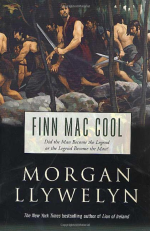 Finn Mac Cool by Morgan Llywellyn – another fictional account about the escapes of an Irish giant. He’s associated with many of the sites we’ll visit including the Giant’s causeway. Another great account of Ulster lore and legend.
Finn Mac Cool by Morgan Llywellyn – another fictional account about the escapes of an Irish giant. He’s associated with many of the sites we’ll visit including the Giant’s causeway. Another great account of Ulster lore and legend.
Somewhere in the shadowy borderland between myth and history lies the territory of Finn Mac Cool. Mightiest of the Irish heroes, leader of the invincible army of Fianna, he was a man of many faces: warrior, poet, lover, creator, and destroyer. Finn Mac Cool is a man taken from one of the lowest classes of Irish society, driven by ambition and strength to rise above his birth and bring new respect and status to his people. He had it all and lost it all, but in the end he gained immortality. Finn Mac Cool is a novel of sweeping historical grandeur and awesome adventure.
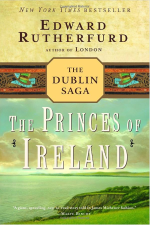 Princes of Ireland by Edward Rutherford – gives a great account of Irish history starting with Cuchulain all the way to the Cromwellian invasion, Great Hunger and Eastern Uprising. It’s a long book, but it’s gives the reader a great background.
Princes of Ireland by Edward Rutherford – gives a great account of Irish history starting with Cuchulain all the way to the Cromwellian invasion, Great Hunger and Eastern Uprising. It’s a long book, but it’s gives the reader a great background.
From the internationally bestselling author of London and Sarum — a magnificent epic about love and war, family life and political intrigue in Ireland over the course of seventeen centuries. Like the novels of James Michener, The Princes of Ireland brilliantly interweaves engrossing fiction and well-researched fact to capture the essence of a place.
NON-FICTION
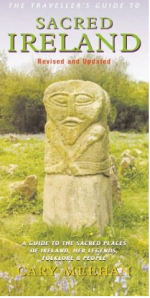 A Traveler’s Guide to Sacred Ireland by Cary Meehan – my all-time favorite book on thin places in Ireland. This is a guide book to mystical sites, sacred places and their associations with the Irish legends, folklore and people. It’s divided by provinces and counties. Hundreds of sites are listed.
A Traveler’s Guide to Sacred Ireland by Cary Meehan – my all-time favorite book on thin places in Ireland. This is a guide book to mystical sites, sacred places and their associations with the Irish legends, folklore and people. It’s divided by provinces and counties. Hundreds of sites are listed.
This amazing book is the result of years of research of historical and archeological detail, legend and folklore, and current information on earth energies for each sacred site. Before the author’s rediscoveries, most of the vast number of ancient sites were unknown or almost forgotten except by locals. Features: *Simple wells and stones *Local pilgrimage spots *Holy mountains, lakes and rivers *Sites created by the Auld Giants *Pre-Celtic Temples *Ancient churches and round towers
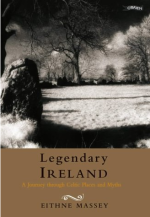 Legendary Ireland by Eithne Massey – an entertaining account of Ireland’s myths and legends. This is a book you’ll reach for time and time again. It addresses both the places and the myths behind them. Many of the sites we’ll be visiting are featured in this book.
Legendary Ireland by Eithne Massey – an entertaining account of Ireland’s myths and legends. This is a book you’ll reach for time and time again. It addresses both the places and the myths behind them. Many of the sites we’ll be visiting are featured in this book.
This title visits 28 richly atmospheric sites and tells the mythological stories associated with them. Woven into these landscapes are tales of love and betrayal, greed and courage, passion and revenge, featuring the famous characters of Celtic lore, such as Cu Chulainn, the children of Lir and Queen Maeve. The historical and archaeological facts, and the folk traditions of each ancient site are explored. Some are famous such as Tara and Newgrange; others are less well known but equally captivating such as the Beara Peninsula in Cork. In a world where many have lost touch with the land and their past, the legendary Irish landscape still survives and the stories are never quite over as long as there are people to tell them.
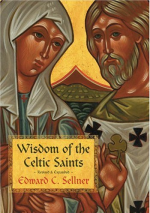 Wisdom of the Celtic Saints by Edward Sellner – A quick study of some of Ireland’s greatest saints, their insights, their contributions and the benefit of being a pilgrim or traveler moving within the context of a story.
Wisdom of the Celtic Saints by Edward Sellner – A quick study of some of Ireland’s greatest saints, their insights, their contributions and the benefit of being a pilgrim or traveler moving within the context of a story.
Faithfully presenting the lives and legacies of twenty Celtic saints of the sixth to ninth centuries, Edward Sellner reveals their wisdom in a way that can be understood and appreciated by contemporary readers. The stories recounted range from the well-known — Patrick, Brendan, Brigit — to those less likely to be familiar — Monesan, Samthann and Aidan. Vivid portrait illustrations by Susan McLean-Keeney add to the prayerful beauty of the book.
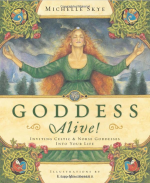 Goddess Alive! by Kris Waldherr – gives great insight into the Celtic and Norse goddesses and the sites they are associated with. This book also offers insight into what thin places are and ways to travel between the two worlds.
Goddess Alive! by Kris Waldherr – gives great insight into the Celtic and Norse goddesses and the sites they are associated with. This book also offers insight into what thin places are and ways to travel between the two worlds.
The changing of the seasons, phases of the moon, even our personal experiences-all are reflections of the Divine Feminine. Create a stronger connection to the sacred world and your own divinity by welcoming these thirteen powerful Celtic and Nordic goddesses into your life.
As you make your way through a transformative year, know that each goddess has a different energy and a unique lesson to teach you. Starting with the Winter Solstice, the eight seasonal Sabbats and five faces of the moon provide the guideposts along your path. Through ritual, invocation, guided meditations, and magical activities, you’ll explore each goddess’s unique mythology and discover her message for your life.
Read More Books to Read for Travel to Ireland and Best Ireland Guidebooks 2015
Ardboe – Mystical Site on Enchanted Lough Neagh
ARDBOE or Ard Bó – a thin place in County Tyrone.
In Irish the name means Height of the Cow. The Ardboe high cross stands 18 feet high on the shores of Lough Neagh. It has 20 scenes from the Old Testament carved into its shaft that are still quite clear even after centuries of weathering out in the elements.
This and similar high crosses throughout Ireland were teaching tools used by the monks for religious education. In the early days of the Church, few villagers or farmers could read, so the bible scenes on the cross were used as a way to illustrate the lessons of the new Christian religion.
St. Colman founded a monastery in the 7th century on this site and built a church. The name Ardboe came from a legend that the mortar used to build that church came from a magic cow that emerged from the lough (Lough Neagh) that had gone dry. The milk from that cow gave strength to the builders as well as the building. In the 16th century, that old church built by St. Colman gave way to a new church – a church that still stands today as a crumbling ruin on the shores of Lough Neagh, clinging to that holy space, drawing its energy.
Lough Neagh is linked to enchantment, believed to be a dwelling place for the fairies. One of tales of Lough Neagh’s origin is that Finn MacCool, the famous Irish giant from Ulster, was chasing his arch-rival from Scotland and the rival was getting ahead of him. Finn MacCool reached down and scooped up a handful of dirt and stone and flung it at the fleeing Scottish giant, missing him by miles. The dirt and stone fell into the Irish Sea and became the Isle of Mann. The hole left in the ground from where Finn scooped up the dirt, became Lough Neagh. The Lough is now the largest freshwater lake in Ireland and Britain, covering 151 square miles and touching five of the six counties of Northern Ireland. For centuries people have believed that its waters have healing powers.
The energy around Ardboe is palpable. It is likely that the land where the monks of St. Colman built the church was already identified as a sacred site. When approaching Ardboe cross and church, one is called to be still. The entire landscape of water, grass, trees and stone is knitted together with a kind of oneness that clings to its past — even while sitting in the present.
To approach Ardboe is to walk into that time of St. Colman and the time of the people before him who also worshiped and prayed at this sacred, thin place. I’m not the only who has felt that special energy of Ardboe. My friend, Maura Brooks, a native of County Tyrone so believes in the mystical energy of Ardboe that she brings travelers to the site on a regular basis. It is Maura who introduced me to Ardboe, and she’s produced a short video about it that give some great commentary from a local perspective.
Irish writer, Polly Devlin, who grew up near Ardboe wrote about the Arboe church site in the 1950s…
The position of the small primitive group of holy buildings silhouetted against water and sky affects us, and most visitors, to initial stillness and silence. The crumbling arched windows frame the perpetual movement of the small crested waves of the lough.
Ardboe is a thin place. It is a stop on our Thin Places tour of Northern Ireland in Sept. 2018.
In the Irish Game of Thrones – Brian Boru Won
The story of Brian Boru, High King of Ireland, plays out like the popular HBO television series Game of Thrones. In the late tenth century, Ireland had about 500,000 inhabitants and 150 kings. It was an old land – a land of tribes and chieftains constantly battling for power and control. No man, woman or child was spared the gruesome, bloody scenes that come with constant war.
Brian Boru was one of eleven sons born to a chieftain who ruled over Thomond, a region covering most of north Munster. He died when Brian was just ten years old. They lived in County Clare in an area now known as Killaloe, a small village on the River Shannon. Being the son of chieftain, Brian was trained as a warrior and he saw more than his share of violence, torture, injury and death. When the local clans weren’t warring, the Vikings were invading. Though Brian grew up to become a great warrior and leader, he also developed superb political skills. These skills paired with his love for Ireland pushed him to become the most successful leader of his time.
At an early age, Brian was ruling Thomond. By the time he was 35 he had ascended to the royal seat of Munster, Ireland’s southwestern province. The High Kings of Munster ruled from the Rock of Cashel , but some historians believe that Brian chose to rule from Kincora, his estate in Killaloe. Brian fathered many sons with several wives, one of whom was a Viking. But as much he traveled throughout Ireland battling and politicking, his home base was always at Kincora. Today, the ramparts of his castle there are still visible in a wooded area off an unmarked path in Killaloe.
Brian Boru Becomes High King in 1002
As in the Game of Thrones where rulers of the seven kingdoms seek the Iron Throne, Brian Boru sought the position of High King. He achieved it when he was 61 years old. Ireland has had many High Kings, but Brian was the only High King who united the entire country for one common cause – to defeat the Norse invaders.
On Good Friday, April 23, 1014, Brian Boru and his sons led an army in a battle at Clontarf near Dublin. There was great loss of life including Brian’s son and grandson, but the 73 year old High King survived. His army defeated the Vikings, driving them into the sea back to their Nordic homelands.
While Brian had a few domestic enemies who ultimately joined the Vikings in battle against him, the Irish masses were behind the High King. And it was this unified spirit that enabled Brian Boru to lead the effort that expelled the Vikings for good. His political savvy, warrior strength and unrelenting determination brought Ireland to a place where the people were united, liberated and poised to grow as a nation.
Brian Boru was undoubtedly the most successful king in Ireland’s history.
Brian Boru and Sons are Buried at Armagh Cathedral
When the Battle of Clontarf was over and the Norse were driven out into the sea, Brian Boru’s army collected its dead and tended to its wounded while the High King returned to his tent alone, to rest. At some time during the night several fleeing Norseman came upon Brian’s tent and found him alone and vulnerable. They assassinated him.
Brian Boru’s warriors carried his body from Clontarf all the way to Armagh, the Christian capital of Ireland. The High King was buried on the grounds of St. Patrick’s church with the bodies of his son and grandson who had died in the battle. Today St. Patrick’s Cathedral stands where the old church stood. On its outside wall, a marble engraved sign reminds Cathedral visitors that Brian Boru was was laid to rest on the north side of the great church.
Today – April 23rd marks the 999th anniversary of the Battle of Clontarf and Brian Boru’s death.
902 Years and a Day Later
Sadly, after Brian died the country fell back into anarchy with warring tribes and clans vying for power. That unity under Brian Boru was never achieved again by the Irish people – not until 902 years and 1 day later when on Easter Monday, April 24, 1916 the Irish started a unified rebellion that eventually won 26 of Ireland’s 32 counties independence from Great Britain.
*
NOTE: The story of Brian Boru is beautifully told in The Lion of Ireland by Morgan Llywellyn. I highly recommend reading it before taking a trip to Ireland. It has so much history in it. When you visit knowing that history the landscape comes alive.
What is a Thin Place? Mike Croghan Answers
Mike Croghan who runs Rathcroghan Tours gave some beautiful commentary when we asked him “What is a Thin Place?” The 2:57 video below is part of that response (more to follow in another post).
Rathcroghan is the ancient royal capital of Connacht. It’s landscape is covered with mounds and stones and lines of energy. Mike was our private guide for the Rathcroghan site on the Thin Places tour of the West in 2012.
The wind was bit loud in the video, so a transcript of what Mike said is written below the video.
Transcript of Mike Croghan’s commentary:
A thin place, as you know yourself, is a very loose term .. for a place that would allow people to make a connection. It could be a place between the earth and the vaults of the skies. It could be a place between the earth and the Other world.
It’s a place where the deities and the people of the Other world at special times of the year can make their way through into our realm, but also, at that same time it’s an opportunity for us to travel to the Other world. And it’s a time where you can make a direct connection with the people of the Sidhe, the people of the mounds, the ancestors.
There are a few people, a few special people who have the ability to do this wherever. For the majority of us, a thin place is an opportunity to to make that connection in a certain geographical location.
Here in Ireland we have so many thin places. We have countless thin places. The specific one that I will always mention to people is Oweynagat – the Cave of the Cats – here on Rathcroghan. It’s known as the entrance to Mother Earth. It’s known as the entrance to the Other World. And that really would really be – let’s call it an axis mundi which is a pivotal point between our world and the Other World.
Just to sum it up, a thin place is a place where you can make a connection, and a lot of the time it’s in a specific geographical location. Like I say here it might be the Cave of the Cats. It could be Keshcorran over in Sligo. It could be on Tara. It might be Uisneach. It might be one of the four royal capitals.
It’s a different place for different people.
What I would say to people out there is that if they go looking for thin places, you might find it on a map. You might just find it in your own personal space – wherever you do ritual… wherever you work.
Boa Island and Caldragh Cemetery – the Janus Figure
This two faced Janus figure has been watching the sun rise and set over Boa Island for several thousand years. He’s about four feet high and is perched in a lumpy, ancient cemetery in County Fermanagh – Caldragh Cemetery.
Boa Island is a small island off the shores of Lough Erne, and Caldragh is a place of high earth energy. There is little known about this figure – referred to as the Janus figure because like “Janus” the Roman god with two faces, this figure has a front and …. well … a front. What you see in this image to the left is one side. The other side is also a front view with a face (see image below).
Locals found a piece of stone nearby that apparently used to serve as a base for this figure which would have made the Janus figure more life size when it was originally carved. No one knows exactly how old the figure is, or where it came from or what it means.
There is much speculation.
The Lusty Man
Near the Janus figure is a smaller, shorter figure that has a similar, sort of heart shaped face. But this little guy only has one face and appears to only have one eye – sort of blinded in his left eye. He is referred to as “the Lusty Man” ..not for any reason to do with lust or sensuality, but because he was found sitting all by his lonesome self in a marshy field on nearby Lusty Beg Island. He was relocated to Caldragh cemetery to keep him protected in a proper setting.
The two figures are anchors on this ancient burial ground. They stand above the ruts and lifts and random stones that mark now-forgotten dead. There is a remarkable presence in this untidy cemetery.
Caldragh is mystical
The cemetery has amazing energy that draws people to it, even though it is one of the hidden sacred places not often found in the guidebooks. If thin places are places where we are more in tune with God and eternal world, then Caldragh is paper thin.
Boa Island is one of several island in Lough Erne, but it is connected to the mainland by a a causeway and single road that runs from one end to the other. It is off this road that a marker sign subtly identifies the cemetery. The word caldragh was often assigned to Irish cemeteries that were not consecrated ground (by the Christians). These cemeteries were might be pagan, or places where unbaptized people or outsiders were buried. It certainly has that forgotten feel, but forgotten like a misplaced loved one, whose soul calls out to be found.
The moment a visitor steps into this space the energy vibrates. The Janus figure watches from every direction. Maura Brooks, a psychic medium and Reiki healer from Tyrone visited Caldragh Cemetery and used a pendulum to test the energy coming from the Janus figure and the Lusty Man. She writes …
Using a pendulum, the Janus figure swung anti clockwise, while the Lusty Man pulled it clockwise. (In energy terms, anti clockwise opens an energy, while clockwise direction closes it). Last time I was there, the cows in the nearby field starting mooing very loudly as I used the pendulum – almost as though they too, could feel the energy opening. And a large white feather fell out of the sky, even though there were no birds around.
Tracing the thin places path – “how did you get here?”
Thin places are places where we are more in-tune to God, the God of the Universe, the one loving creator that binds people of all faiths, all souls together into one connected family. Thin places lead us to truth, wisdom and purpose. But sometimes it’s hard to figure out what we’re supposed to learn of be led to.
Five steps for Traveling to Thin Places
Use these five keys for traveling to thin places. They unlock insights.
- Trace the route that brought you to the thin place. How did you get there? How did you hear about this place? Who led you there?
- Notice the signs as you enter. Sometimes things you see or encounter as you approach or enter a site will have meaning later.
- Take in the details. Look at the borders. Study with your five sense. Be still, don’t move. Just notice the details.
- Record your memories during or soon after the visit. In a journal write down the answers or notes from keys 1, 2, and 3. Also note how you feel, what you sense apart from your five senses. Write the date and time you were there. Record the names and details of key people you met or encountered at the site.
- Build your internal gateway at home. Store all related materials, notes, photos, mementos (items taken from the site) and anything else related to the site in one place. These items can help you return to that thin place internally when you want to revisit it and draw on the spiritual energy there.
May your spirit soar as you experience thin places.
Rathcroghan – Royal Site in Tulsk – County Roscommon
Guest blogger for this post is Mike Croghan, owner of Rathcroghan Tours. He’s from Bellanagare in County Roscommon. Mike is an artist as well as a guide will be leading our group through the Rathcroghan sites on day 6 of the Thin Places 2012 tour.
A Croghan on Rathcroghan
I’m the luckiest man in the world – I really am, I’m a Croghan and I live on Rathcroghan.
To those who may not have heard of Rathcroghan (that would be 99.9% ), it is one of Ireland’s greatest hidden gems, a landscape that is both physical and mystical, the Tara of the west, home to the goddess Medb, the epicenter for Celtic spirituality……and more.
I clearly remember sitting at the window looking over at a nearby hill whilst eating my dinner – I was 7 years old. What had my attention was a ring fort on the hill top, I can remember wondering what it was before turning my attention back to the spuds.
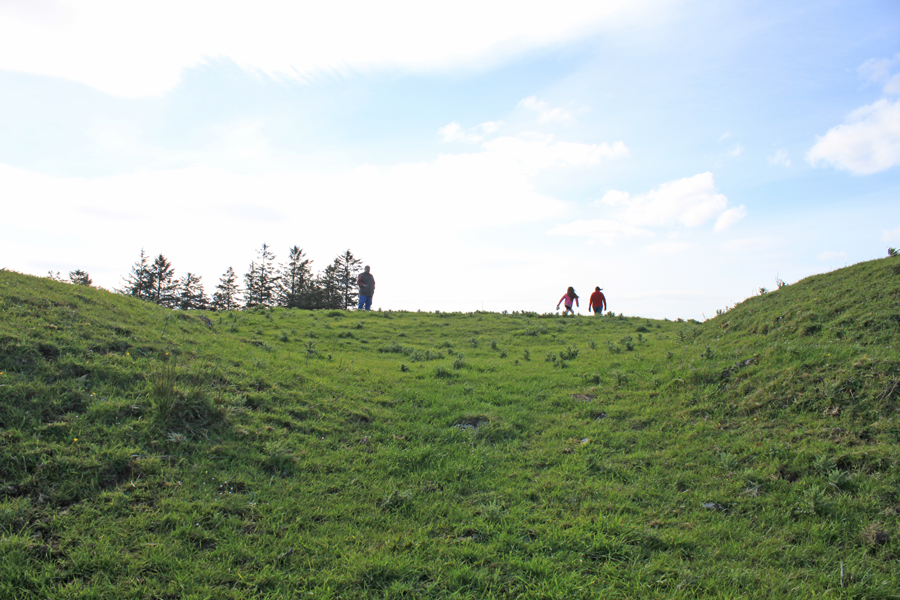 Approaching one of the Rathcroghan mounds.
Approaching one of the Rathcroghan mounds.
Over 40 years later I still wonder about that ring fort, what was it used for, why was it placed there, who lived there; my problem is that I am asking the same question about the other 140 monuments on Rathcroghan and it has taken over my life. You see Rathcroghan has the highest density of earthworks in Europe and they sit on the landscape, untouched in their original state teasing me with their enigmatic presence.
The monuments are wrapped in myths and legends, some are named after long dead kings or heroes, others hold the secrets to the otherworld, more have names associated with ancient tales and stories.
For the archaeologist Rathcroghan is a gold mine of monuments dating from as far back as the Neolithic period all the way through the bronze age, iron age, right through the medieval periods to today, so many different styles of monument – raths, cairns, barrows, ring forts, ceremonial mounds, caves and standing stones.
If you approach Rathcroghan as a spiritual pilgrim looking for a connection then you have hit the mother load. The integrity of this landscape has remained intact over the millennia as have the energies within the land. In fact the area only really makes sense when viewed as a ritual landscape.
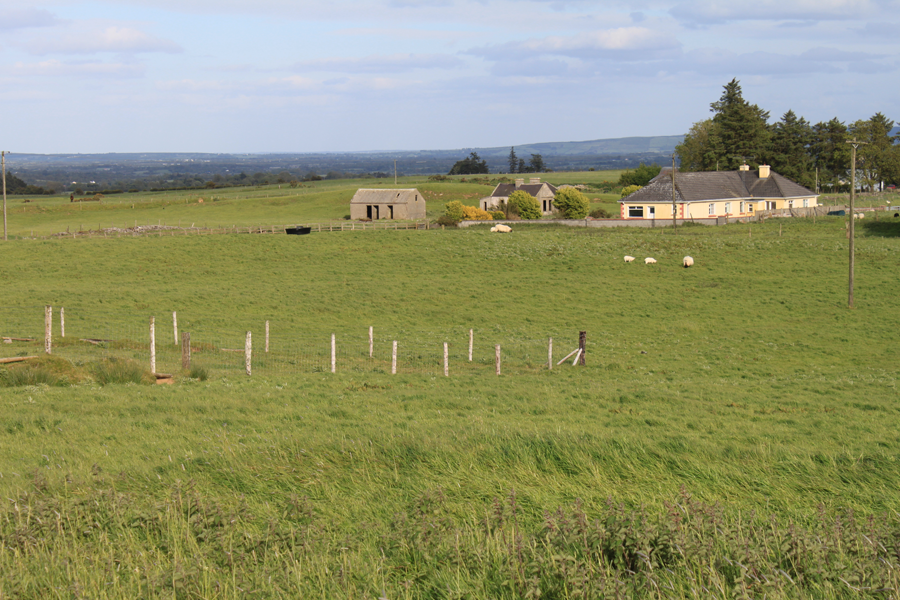 View from one of the Rathcroghan mounds
View from one of the Rathcroghan mounds
While other Celtic capitals hit the headlines and receive thousands of visitors each year Rathcroghan sits and waits for the inquisitive pilgrims to search it out, allowing only the true path walker to find it, this may sound poncy but it really is true.
The greatest thrill for me is to be able to introduce these seekers to the area and let them see for themselves just how special the area is, as I said, I’m the luckiest man in the world.
And I still love the spuds.
 Mike Croghan – Rathcroghan Tours
Mike Croghan – Rathcroghan Tours
Learn more about Rathcroghan at Mike’s website – Rathcroghan Tours. His website includes some video and audio with photographs and text. It’s a great resource for those wanting to know more about this remarkable complex of sites.
Corcomroe Abbey – Monastic Ruins in The Burren
County Clare is one the most visited areas on tours of Ireland, and the Burren is a worthy destination for any traveler to the West. The Poulnabrone Dolmen, ring forts and the moonscape look of the Burren are what most people see in photos and guidebooks on Ireland. But the mystical ruins of Corcomroe Abbey are an equally important Burren landmark. This sacred ground compels the visitor to be quiet, devoted, contemplative … almost as is if the long-gone inhabitants were still there.
Originally, Corcomroe was a Cistercian abbey, set in the valley surrounded by the Burren’s barren hills that look as if all the grass and vegetation were scraped off with jagged glass. The abbey was built sometime in the late twelfth century. Access to the valley was through a pass in the mountains known as the “monks pass, ” and it was part of a fortified region guarded by a castle (now long gone).
The fishbone pattern on the ribs that support the vaulted roof over the sanctuary, the effigy of a Chieftain king, the smiling bishop carved into a crumbling wall, carved faces and flowers resembling bluebells atop the large columns are all part of what makes Corcomroe amazing.
Corcomroe is a place to walk through slowly… to stop and notice the details.
The Abbey sits just off one of the main roads that wind through the Burren. It’s easy to explore and has a strong sense of solitude. The backdrop of the mountains and small green fields still enclosed by abbey stone walls add to the solitude of Corcomroe. It has a haunted presence.
Corcomroe projects its memories into the landscape and onto the pilgrim.
The setting is a perfect mingling of this world and the eternal world – the past and the present. Looking at the old ruins immediately draws the visitor into a rich past, but the new roof protecting a portion of the abbey is a contribution of today’s faithful – people who want to protect it and preserve it. …a community that values and cherishes it.
What’s left of Corcomroe is a historical spiritual remnant kept company by the local village’s faithful departed. Graves are everywhere. But so are little hints and reminders of today’s faithful who come to pray, reflect and tend to the memories. Their presence is seen in the repaired grave slab, a makeshift cross, a new flower bed or a small shrine like the one pictured above. This plastic virgin Mary is secured into a concrete base. She was placed on the outer wall with three lavender silk roses and a glass jar. Coins left by devotees are both in the jar and at her feet. I took this photo in September of 2009. I returned to Corcomroe in May of 2011. The shrine was gone.
Corcomroe is a thin place. It’s a lonely place.
